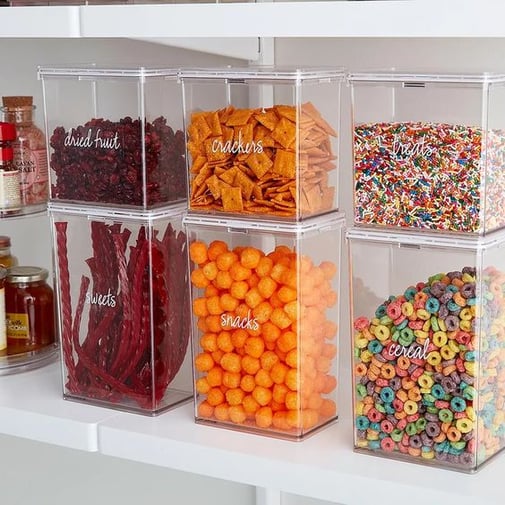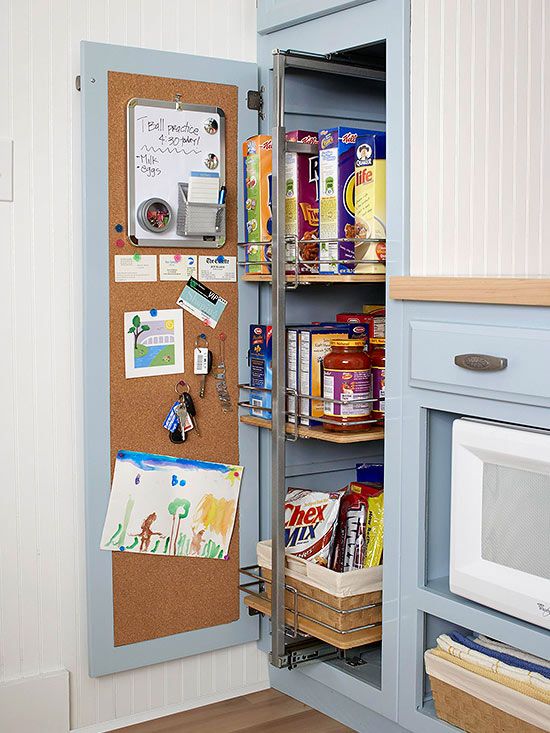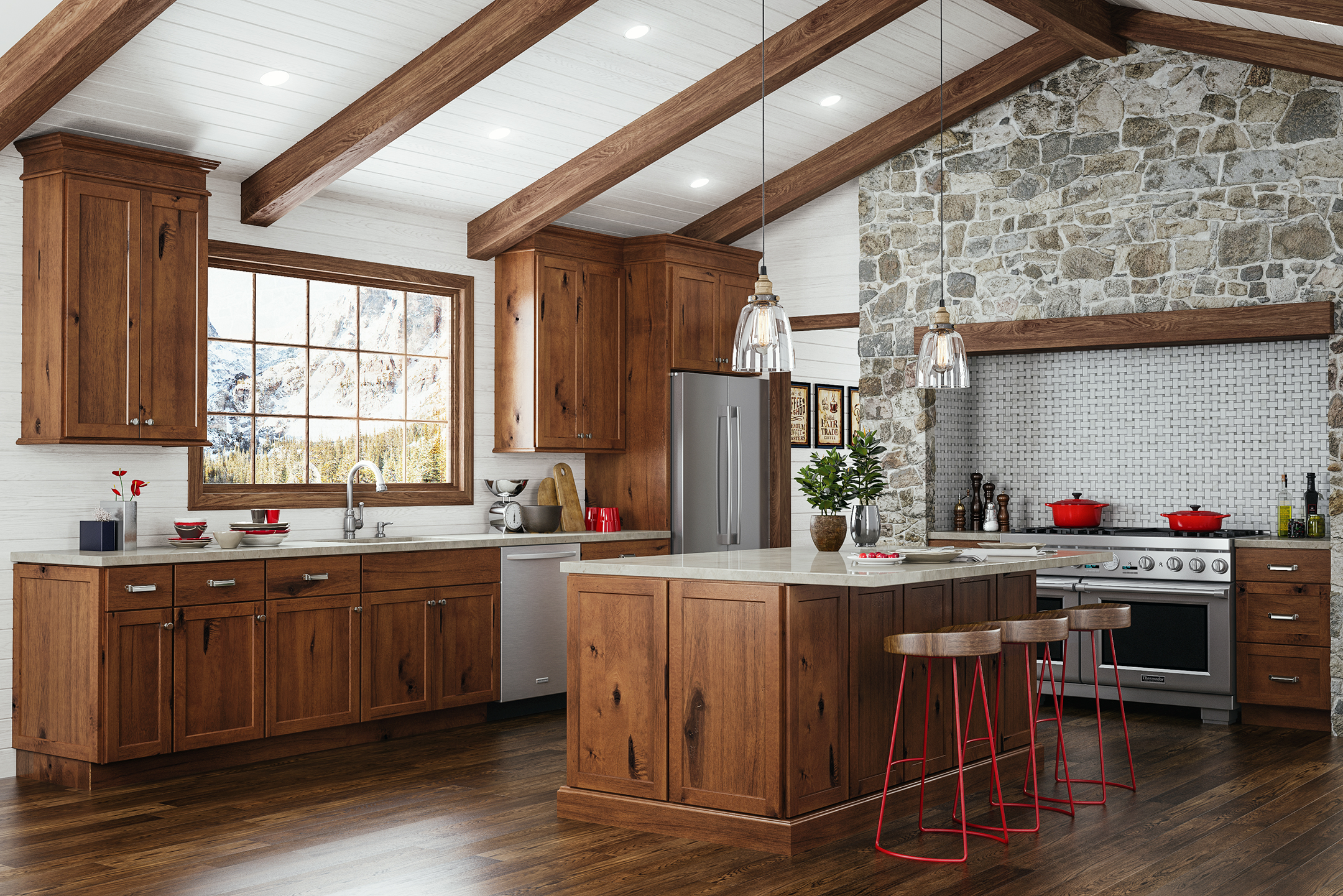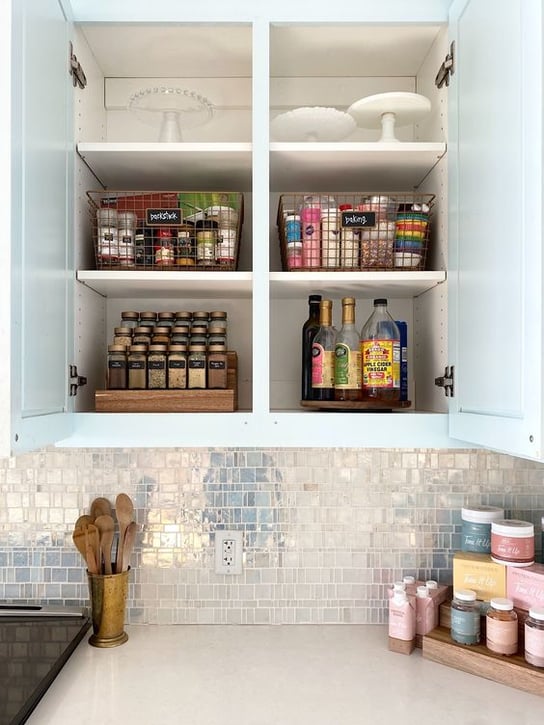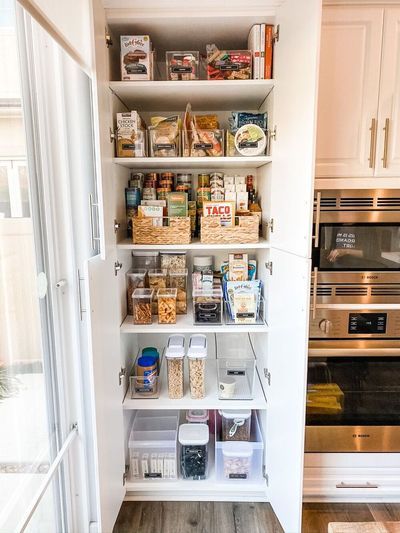How to Organize the Food in Your Kitchen Cabinets and Pantry
Are you overwhelmed by clutter every time you open or kitchen cabinets or pantry?
How did your cabinets get like this anyway?
How long has that bread been in there?
If you’ve had enough of cabinet chaos, then this guide to organizing your food in your kitchen cabinets is here to help.
Before You Get Started
It’s tempting to just dive right in and rearrange items.
But if you take a few minutes to get organized before you start organizing, the entire process will go a lot smoother.
Throw Away all Expired Food and Stale Items
Do you ever get the urge to just start throwing everything away after staring at your cluttered cabinets for too long? (Guilty!)
Then enjoy leaning into that and start by throwing anything that’s expired or stale directly into the trash.
No, you don’t need to hang onto that box of pasta.
It’s taking up storage space and you clearly weren’t interested in eating it because otherwise it’d be gone.
Plus, any old grains and bread can attract pests, and you don’t need pantry moths living in your cabinets, rent-free.
Clean Your Cabinets
Now that you’ve tossed any old food, take everything else out of your cabinets and give it a cleaning.
You’ve cleaned back there before, right?
No? That’s okay.
Use the hose attachment on your vacuum to remove any leftover crumbs then wipe everything down with an appropriate cleaner.
Make a Plan
With your cabinets clean, take full stock of the space. Jot down a few ideas for how you want to use the space. (We’ll talk more about organization techniques later.)
Take measurements of the height and depth of your shelves so you know what items can fit where.
Here’s an example pantry plan from iheartorganizing.com for reference.
.png?width=600&name=How%20to%20organize%20kitchen%20cabinets%20(food%20only).png) |
| Image from iheartorganizing.com |
Make a Grocery List
Okay, so you’ve cleared everything out.
You should have a pretty good idea of what items you have and what you’re missing.
Take a few minutes to put together a list of the things you need.
Feel free to go out and pick up those items now, so you won’t end up organizing your pantry twice.
I’ll be recommending some organization tools next that you might want to grab while you’re out anyway.
Buy Organization tools
Since you’re heading out to pick up some groceries, stop and grab some of these organization tools to help you gain better control over your kitchen cabinets.
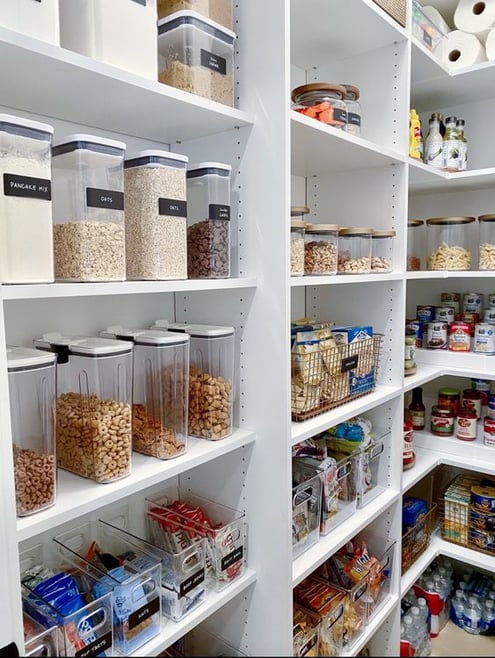 courtesy of neatmethod.com on Pinterest
courtesy of neatmethod.com on Pinterest
Cabinet Organization Tools
This may come as a shock, but the stock cabinet layout isn’t ideal for organizing food.
With these organization tools, however, you’ll have easy storage solutions for every inch of space you have.
Interior DrawersOne of the best ways to organize your cabinet space is by compartmentalizing it through interior drawers, bins, and baskets.
These tools let you divide your shelves into sections, grouping similar items together.
This is also a great way to make it easier to access those items that normally get stuck in the back.
This simple trick is going to save you from wasting food because, let’s face it, if it’s hiding in the back, you’re much less likely to use it.
Drawers, bins, and baskets also reduce the butterfly effect of disorganization that happens when you try to grab an item in the back of the cabinet without removing the items in the front.
courtesy of popsugar.com on Pinterest
Clear Containers
Clear containers are great for several reasons.
They let you get granular with your organization, letting larger quantities of store-bought goods to be kept in one place.
Clear containers also let you see the items stored inside so you easily determine the quality of your stored goods.
Finally, airtight containers protect food from moisture and pests, keeping things fresh longer.
Bonus Tip: Partner a label maker with your clear containers to remember exactly what you put into each bin.
courtesy of styleanddwell.com
Raised Cabinet Racks
Raised cabinet racks are great if you value being able to see all of your items at once.
Grouping items into tiers also allows you to further segment your cabinet organization.
If you’re using these on a smaller, tighter shelf, it’s likely tall items won’t fit on the back step.
Stick to using raised racks in a few select places throughout your cabinets to leave room for larger goods and containers.
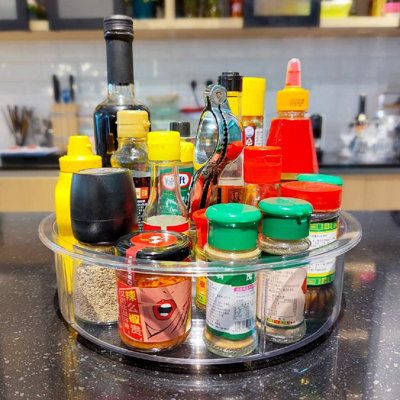 courtesy of wayfair.com on Pinterest
courtesy of wayfair.com on Pinterest
Turntables
Despite their name, lazy susans can do a lot of work for your cabinets.
They’re in their element in the deepest hardest to reach corners of your cabinets or pantry.
Turntables are perfect for cycling through baking supplies, spices, sauces, and that one item that usually requires unpacking the entire cabinet to find.
Now all you have to do is give a quick spin and everything you’re looking for right in front of you.
courtesy of theidearoom.com on Pinterest
Cork Boards
Okay, so installing a corkboard to the inside of your cabinet door won’t do much for organizing your food storage.
It does, however, make it easy to hang recipes and shopping lists to make meal preparation and grocery runs more efficient.
Consider this an active cabinet organization tip.
Cabinet Food Organization Techniques
Now that you have the tools, we’re going to put them to work with these cabinet organization ideas and techniques.
- Organize By Food Type
- Organize By Container Size
- Organize By Shelf Life
- Organize By Use
- Organize By Activity
- Organize By User
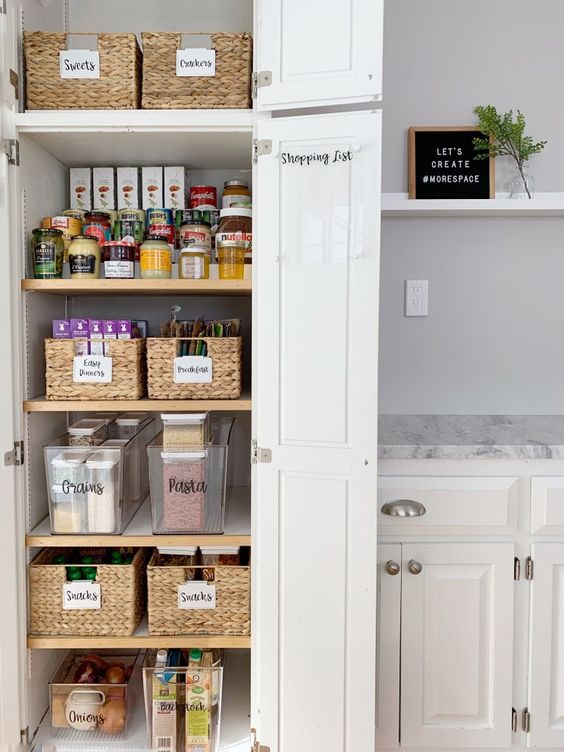 courtesy of styleanddwell.com on Pinterest
courtesy of styleanddwell.com on Pinterest
Organize Cabinets By Food Type
This is a go-to-cabinet organization strategy.
When organizing by food type, here are some categories:
- Cans - subdivided into soups, beans, tomatoes, etc.
- Sauces
- Cereals
- Pasta
- Rice & Grains
- Grab-and-go snacks (granola bars, snack packs, etc.)
- Chips, pretzels, and other bagged snacks
- Baking Ingredients
- Nuts & Seeds
- Dry Fruits & PreservesCondiments
- Spices & Dried Herbs
- Bottled/Canned Drinks.
Organize Cabinets by Container Size
Most often this leads to smaller items being stored in the front of cabinets, and taller items placed in the back to stay visible.
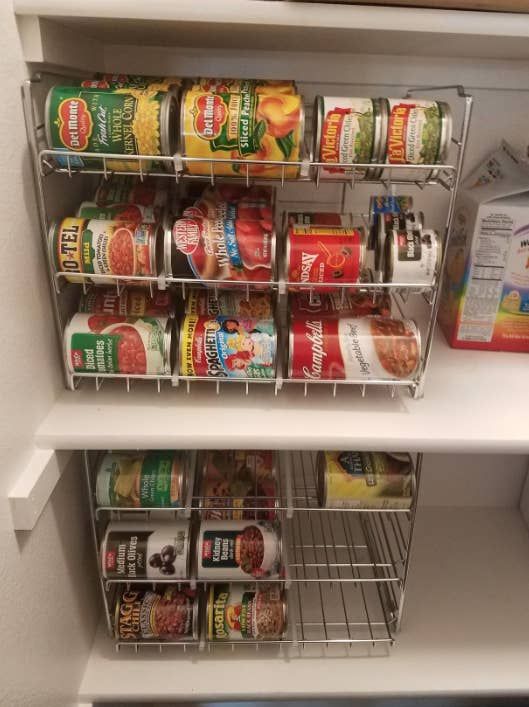 courtesy of BuzzFeed.com on Pinterest
courtesy of BuzzFeed.com on Pinterest
Organize Cabinets by Shelf Life
Store Items that often expire quicker, like produce, in the front, and store canned goods and pasta in the back.
This way items that have shorter shelf lives don’t get pushed to the back, get forgotten, and start to rot.
courtesy of neatmethod.com on Pinterest
Organize Cabinets by Use
If you have several goods that you use daily and have to restock frequently, store them in the front of your cabinet.
It doesn’t make much sense to keep them high out of reach or deep in the back of your cabinets if you use them every day.
Bonus tip: Keep those items grouped in a removable container.
Then, when it’s time to make the kids’ lunches or your favorite PB&J, that basket can move from the pantry to the counter and save you some digging around.
courtesy of riorganize.com on Pinterest
Organize Cabinets by Activity
Split your cabinets into zones based on specific kitchen activities.
For example, dedicate one shelf to breakfast items, like coffees and teas.
Another shelf can be for baking, home to your flours, and sugars. A third section could be for Italian cuisine, containing pasta, canned tomatoes, and jarred sauces.
This organization technique keeps you from darting from cabinet to cabinet when trying to make a meal.
Organize Cabinets by User
If you’re sharing your kitchen with kids, and have to store items in places they can reach, put light (kid-friendly) items lower and potentially messy items up high!
That way no one risks getting hurt, and hopefully, the inevitable clean up will be a little easier.
Organization Coordination
Congratulations! Now you can bask in the glow of your pristine and orderly cabinets.
What tips helped you the most?
Did you find a tool we didn’t list?
Did you use a cabinet organization technique that’s been in your family for generations?
Leave a comment letting us know. It might just help someone else tackle organizing their kitchen cabinets.

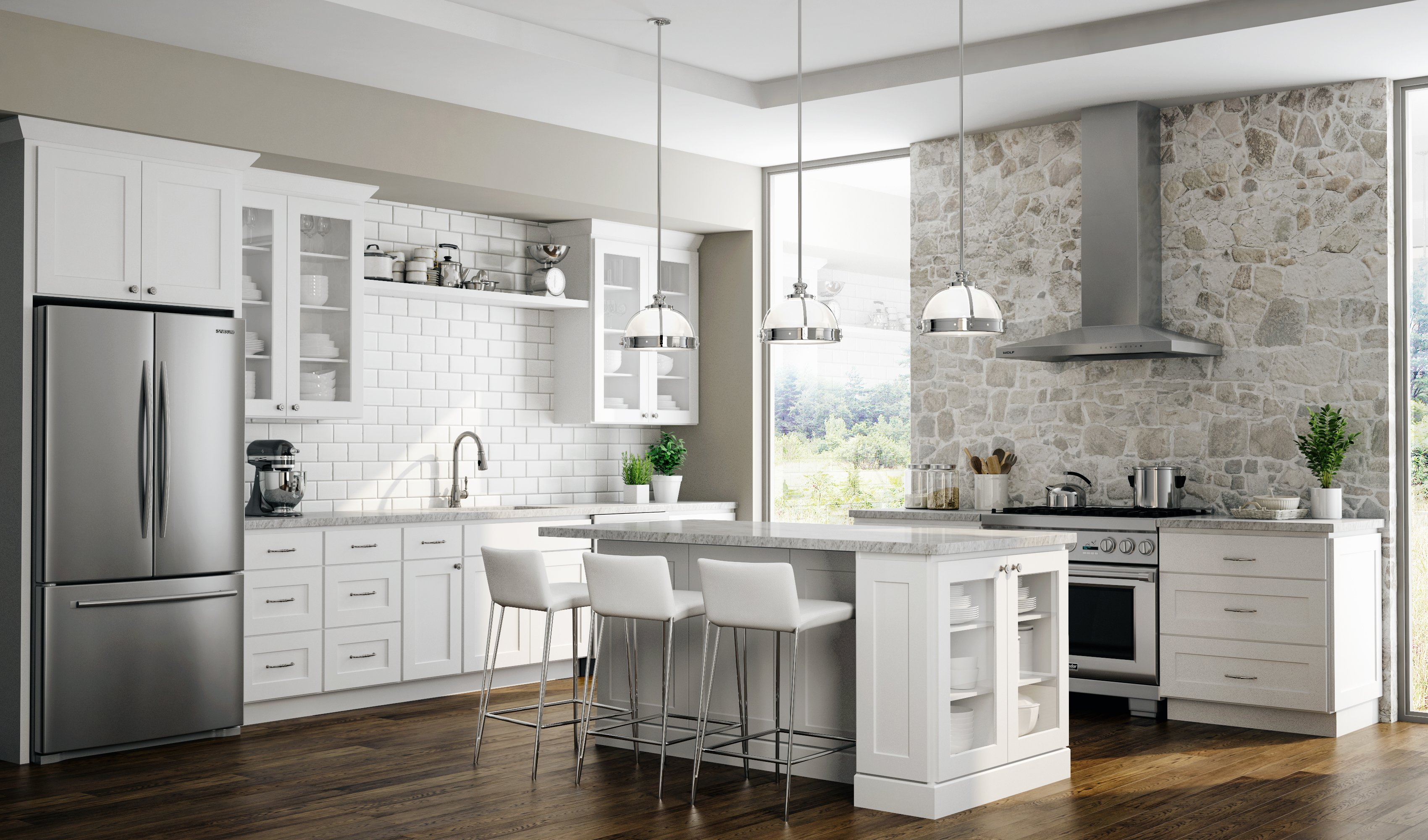
.jpg?width=560&name=Copy%20of%20Dover%20Castle%20Kitchen%20(2).jpg)


